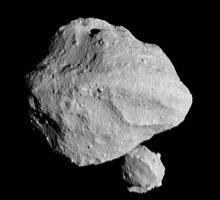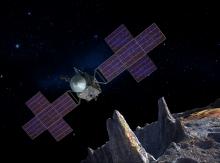Listen to today's episode of StarDate on the web the same day it airs in high-quality streaming audio without any extra ads or announcements. Choose a $8 one-month pass, or listen every day for a year for just $30.
You are here
Phaethon
One of the strongest meteor showers of the year, the Geminids, will be at its best on Wednesday night. The shower should sprinkle dozens of meteors into the sky per hour. And the Moon won’t interfere with the fireworks, so it should be a pretty good show.
Most meteor showers form when Earth sweeps up streams of particles shed by an icy comet. But the Geminids were the first meteor shower known to be spawned instead by a rocky asteroid.
Skywatchers have seen the Geminids for more than a century. But the shower’s source wasn’t discovered until 1983, by a small space telescope. The asteroid’s orbit around the Sun matches that of the Geminid meteor stream.
The three-mile-long asteroid leads a rough life. It orbits the Sun once every 17 months. It follows a highly elliptical path, so it both freezes and fries. At its farthest from the Sun, it’s outside the chilly orbit of Mars. When it’s closest to the Sun, though, the asteroid skirts well inside the orbit of Mercury. At that range, its surface temperature soars to more than a thousand degrees Fahrenheit. Because of that Sun-skimming flight, the asteroid was named Phaethon, after a son of the Greek Sun god Helios.
Phaethon may be a former comet that has exhausted its supply of ice. Or it could be a chip off a bigger asteroid.
Phaethon passed just 6.4 million miles from Earth on Saturday. Up next, the asteroid’s offspring will reach its peak — the beautiful Geminid meteor shower.
Script by Ken Croswell






